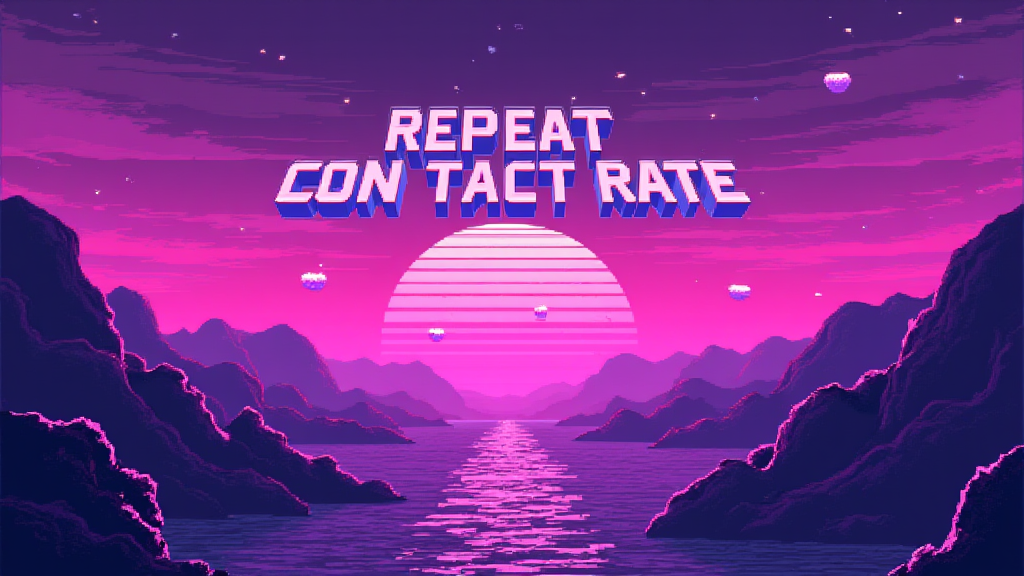Repeat Contact Rate: Measuring Customer Interactions

Published on: October 01, 2024
In the world of customer service and support, understanding how often customers need to reach out for assistance is crucial. This is where the Repeat Contact Rate (RCR) comes into play. 📞
Repeat Contact Rate is a key performance indicator (KPI) that measures the percentage of customer interactions that require multiple contacts to resolve an issue or answer a query. It's a vital metric for assessing the efficiency and effectiveness of your customer support operations.
Why Repeat Contact Rate Matters
The importance of RCR cannot be overstated in the realm of customer service and support. Here's why it's a critical metric to track:
- Customer Satisfaction: A high RCR often indicates that customers are not getting their issues resolved in a single interaction, which can lead to frustration and decreased satisfaction.
- Operational Efficiency: Repeat contacts consume more resources, increasing costs and potentially overwhelming support teams.
- Problem Identification: Tracking RCR can help identify recurring issues or knowledge gaps that need to be addressed.
- Quality of Service: A low RCR generally suggests that support teams are providing clear, comprehensive solutions on the first contact.
Calculating Repeat Contact Rate
To calculate the Repeat Contact Rate, use the following formula:
$RCR = \frac{Number\ of\ Repeat\ Contacts}{Total\ Number\ of\ Contacts} \times 100$
For example, if you had 100 total contacts in a week, and 20 of those were repeat contacts, your RCR would be:
$RCR = \frac{20}{100} \times 100 = 20\%$
Strategies to Improve Repeat Contact Rate
Reducing your RCR can lead to improved customer satisfaction and operational efficiency. Here are some strategies to consider:
- Enhance First Contact Resolution: Train support agents to provide comprehensive solutions during the first interaction.
- Improve Knowledge Base: Develop and maintain a robust knowledge base that customers and agents can easily access.
- Implement Proactive Communication: Anticipate common follow-up questions and provide information preemptively.
- Analyze Root Causes: Regularly review repeat contacts to identify and address underlying issues.
- Utilize Technology: Implement AI-powered chatbots or self-service portals to handle common queries efficiently.
Benchmarking Your Repeat Contact Rate
While ideal RCR can vary by industry and company, here's a general guideline:
| Performance Level | Repeat Contact Rate |
|---|---|
| Excellent | < 5% |
| Good | 5-10% |
| Average | 10-15% |
| Needs Improvement | > 15% |
Remember, the goal is to continuously improve your RCR over time, regardless of your starting point. 📈
Common Challenges in Managing Repeat Contact Rate
While striving to reduce RCR, companies often face several challenges:
- Complex Products or Services: Some industries naturally have more complex issues that may require multiple interactions to resolve.
- Balancing Speed and Quality: Rushing to resolve issues in a single contact might lead to incomplete solutions and eventual repeat contacts.
- Training and Knowledge Management: Keeping support teams up-to-date with the latest information and best practices can be challenging.
- Customer Behavior: Some customers may prefer multiple shorter interactions over a single, longer one.
By understanding these challenges, companies can develop targeted strategies to overcome them and improve their Repeat Contact Rate.
Implementing Repeat Contact Rate in Your Strategy
To effectively use RCR in your customer service strategy, consider asking yourself these questions:
- What is our current Repeat Contact Rate, and how does it compare to industry benchmarks?
- What are the most common reasons for repeat contacts in our organization?
- How can we improve our first contact resolution rate?
- Are there any technological solutions we can implement to reduce repeat contacts?
- How can we better train our support team to handle complex issues more effectively?
- What proactive measures can we take to anticipate and prevent potential repeat contacts?
By regularly reviewing and addressing these questions, you can develop a robust strategy to minimize your Repeat Contact Rate and enhance overall customer satisfaction. Remember, a lower RCR not only improves customer experience but also contributes to operational efficiency and cost reduction. 🎯
















